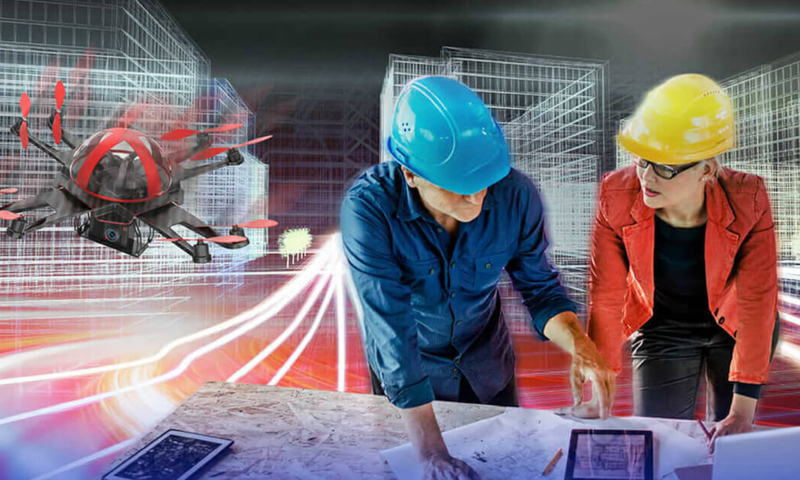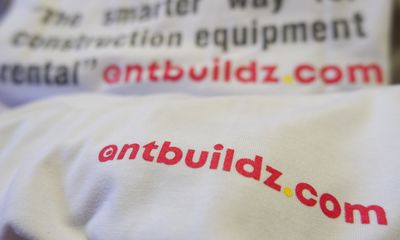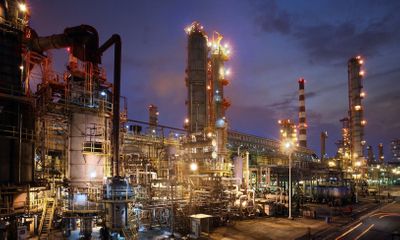© 2025 Powered by Antbuildz.com
© 2025 Powered by Antbuildz.com

Every day we are seeing how new technology is helping to improve our lives by making tasks easier. Technology is conquering every single industry in the world faster than ever in this century. One industry that is considerably slow in adopting but slowly being impacted by the new wave of technology. It is the construction industry.
So, what is construction technology? It refers to the collection of innovative tools, machinery, modifications, software, etc. used during the construction phase of a project that enables advancement in field construction methods, including semi-automated and automated construction equipment. Construction technology is used for all kinds of different projects, ranging from small residential houses to massive industrial plants.
Below we will walk you through what construction technology is and talk about some of the latest trends in the industry. We’ll also go over just types of construction technology and how it is impacting the industry in all its forms.
LEARN INTRODUCTION OF KEY CONSTRUCTION EQUIPMENT HERE

Mobile technology is becoming more of the norm in construction, and for an essential reason at least for apps which is the create awareness at construction sites. The increased smartphones allow for greater communication and the ability to work from anywhere. Integrating this type of technology into your current processes can be much simpler and require a smaller upfront investment while still providing major benefits and boosting productivity in your day-to-day operations.
Mobile technology can help to save time and keep your project moving forward faster by providing real-time updates and making information available between the job site and the office eg like WhatsApp, Wechat photos, and video circulated in construction-related group chats. You can easily access the latest revisions to plans or report a problem to the project manager off from the site.

Drones are the most widely used emerging construction technology in modern days. They can conduct site surveys more quickly and accurately than a crew on the ground and are cheaper than aerial imaging. Their high-resolution cameras and the data collected can create interactive 3D or topographical maps and models and take volume measurements.
Drones can be used for photogrammetry which uses imaging devices and digital algorithms to produce 3D models of terrain, roads, and buildings. Beyond photogrammetry in the field of image analysis and object recognition. Here the software can piece together images of a building to automatically create a 3D image. And beyond image analysis is the use of structured light to produce very accurate 3D models from so-called point clouds.

Most people understand what a three-dimensional model of a building is. It shows the structures, or what will be built and where. This is called a 3D-Building Information Model or BIM, containing enough detail to show all the components needed to create a structure from floorboards to beams, to columns, pipes, and sheet products.
5D BIM technology comes into its own when you need to make changes to a design. For example, if the project requires more underground parking, you modify the 3D design to include another level of parking, run an automatic 5D analysis, and immediately see what this change has done to the schedule and total cost of the project.
In construction no plan ever mirrors reality. Weather delays, late manpower onboard, or material shortages inevitably happen. Things change so fast even the best construction managers cannot revise their forecasts fast enough. This is what makes 5D BIM so powerful. An integrated 5D BIM can yield answers to critical questions as fast as the inputs change in real construction life.

Virtual reality technology is often used in conjunction with BIM to help better understand complex projects. Think of the potential: you create a building design with BIM and then are able to use VR to actually walk around it. This will give your team, or the client, and even more realistic idea of what the project will look like once completed or even in the construction stage whereby you could check what is completed and what is not. Having a more complete grasp on the project before it begins gives you the opportunity to avoid big changes and expensive variation orders mid-way through the project execution.
Wearables are a construction technology that will have an impact on job site safety and risk management. Microsoft's HoloLens is a wearable computer that lets you see holograms superimposed over the real world. One can experience the full-scale hologram of a building or project a scaled-down model onto a tabletop for viewing. Both experiences improve the understanding of the design and intended use, and both experiences can be shared by more than one HoloLens user.

3D Printing is transforming the construction industry. This innovative technology was used in a few years ago to help design and construct two bridges. Now, construction companies all over the world are using 3D printing to help them complete projects like never before.
Traditionally, contractors could only make so many changes to a wood/plastic model before they had to create an entirely new model. Now, 3D printing makes it easy for contractors to adjust their plans without having to start over. 3D printing can also help to create curved designs, whereas plastic and wooden models are limited to straight lines.
Even more fascinating, 3D printing is now being used to complete full-scale projects as well. Beyond modeling applications, builders can 3D print parts and components to be used in the actual construction of projects!

There are some creative robots available in the market such as bricklaying robots or rebar tying robots. Once set up, these robots can work continuously to complete tasks faster than human workers without needing to take breaks or go home for a good night's sleep. Robots do not get exhausted from lifting bricks, applying mortar and setting them in place, or constantly bending over to tie rebar.
There is another direction which is the remote operation of equipment for a dangerous tasks. Such as demolition work, confined space work and etc. Operators can remote control the equipment from the control room instead of sitting inside the equipment to operate. It can reduce the risk and have a better view of the entire operation.

AI can create tremendous value in construction. First, start with an extensive, high-quality database of past results and then develop machine learning processes to make predictions. Our favorite example is using AI to create new construction schedules by exploring thousands or millions of scenarios. Image recognition is another way to use AI in construction. You can use AI to analyze photos of materials on the job site and identify materials at risk or watch for high-risk trends in worker behavior.
If you're looking for AI to use right now, keep in mind that it may have a different name. Some companies prefer to use the term “machine learning” or “algorithms” to describe the same capability.

Building owners want more analytics and IoT capabilities in their buildings. As a result, we predict that the construction industry will develop greater IoT expertise. Specifically, installing, testing, and improving network-connected sensors in buildings will become more popular. This will give building owners the capacity to manage heating, cooling, security, and energy usage more efficiently. In the short run, consider outsourcing IoT work to specialized firms. To stay competitive in the long term, you'll need to develop this capacity internally.
Aside IOT can also be applied to the equipment users. By collecting vast data from the equipment, we can have a better view of the condition of the equipment and prepare for predictive maintenance to lower down the breakdown rate.

From a traditional paper process, construction slowly shifts into an era where every single process and documentation will be fully digitized. Every process will be connected with digital technology where stakeholder can execute their action with just a mobile phone in their hand. A process like accounting, human resource and procurement and etc are the key area to start adopting the technology. Digitization will be able to increase the productivity and efficiency of construction companies significantly.
Construction firms are starting to come around on technology adoption. Companies that are researching and implementing construction technology are reaping the rewards with increased productivity, better collaboration, and completing projects on time and under budget—resulting in higher profit margins.
It might be a tough pill to swallow, but we have gotten to the point where firms that are not investing in new technologies and solutions are no longer staying competitive with those that are strategically adopting and implementing tech solutions. The onset of change in the construction sector is so rapid that inevitably those capable of responding to change and integrating technology will be the winners, while those who do not adapt risk being left behind.
Are you part of the adoption of construction technology?
Remember to Like and Follow us on Facebook! bit.ly/34MdSFh
Any Questions?
WhatsApp or Call Us for a FREE consultation on the most suitable equipment for your site. We’re more than happy to assist!
Related Articles

The Advantages of Embracing Digital Transformation in Construction Equipment Rental
Did you know that an average of 70% of B2B buyers do their online research befor ...
Learn more
22 Jan , 2025

Top 5 Advantages of Telematics Technology in Equipment Rental
What Is Telematics? Telematics simply refers to the transmission and receiving o ...
Learn more
22 Jan , 2025

How antbuildz.com was founded?
It is not uncommon to hear that the construction industry is still one of the fe ...
Learn more
22 Jan , 2025

The Importance of Oil and Gas Industry in Singapore
What will be the impact on Singapore amid of collapse of the oil industry? First ...
Learn more
22 Jan , 2025